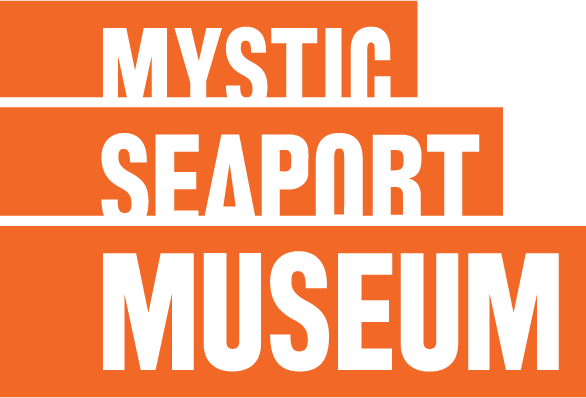Major Exhibition Explores One of the Sea’s Most Enduring Puzzles: The Fate of 129 Men Who Disappeared in the Arctic in 1845
 Mystic, Conn. (November 2, 2018) – Mystic Seaport Museum will host a major exhibition opening December 1, 2018, that explores the fate of the Franklin Expedition, a tragic story of Arctic exploration and death and one of the most enduring mysteries of maritime history – a mystery that remains unsolved to this day.
Mystic, Conn. (November 2, 2018) – Mystic Seaport Museum will host a major exhibition opening December 1, 2018, that explores the fate of the Franklin Expedition, a tragic story of Arctic exploration and death and one of the most enduring mysteries of maritime history – a mystery that remains unsolved to this day.
Death in the Ice: The Mystery of the Franklin Expedition will display more than 200 objects from the collections of the National Maritime Museum in London (NMM) and the Canadian Museum of History (CMH), alongside finds recovered by Parks Canada from Franklin’s ship HMS Erebus. The artifacts from Erebus – the vessel was discovered under water in 2014 – will be on show for the first time in the United States. The exhibition promises to advance our understanding of the expedition and the fate of Franklin and his men. Death in the Ice will also explore both the European and Inuit perspectives including the importance of the Inuit to those out looking for the remains of the expedition.
“We are very pleased to be presenting this compelling and mystifying story, which has had a hold on the imaginations of so many since the ships disappeared into the Arctic,” said Steve White, president of Mystic Seaport Museum. “We are particularly pleased to highlight the critical role Inuit have played in the Franklin story, from the years immediately following the expedition’s loss to recent discoveries of the ships. Though much of what happened to the expedition remains a mystery, what we do know is largely thanks to Inuit oral history and underwater archaeology.”
Setting sail from London on May 19, 1845, Sir John Franklin and his 128-man crew, aboard Erebus and Terror, were the British nation’s biggest hope of finally traversing the Northwest Passage – the much desired, possibly faster, trade route from Europe to Asia.
Franklin and his men were last seen by Europeans in Baffin Bay in July 1845. Two years would pass with nothing heard from the men, prompting the first of a series of expeditions to be sent into the Arctic in an attempt to find them and the reasons why they had not been in touch with the Admiralty or loved ones at home. Over the course of the next 30 years, news and relics, such as snow goggles, cutlery, and a portable stove – examples of which can be seen in Death in the Ice – filtered back out of the Arctic and spoke to what had happened: the deaths of the entire crew through a combination of factors including scurvy and starvation, and speculation of cannibalism and potential madness brought on by lead poisoning. It was not until 1859 that a sole piece of paper, often known as the Victory Point Note (and on display as part of the exhibition), was found and revealed anything about what happened, including the date of Sir John Franklin’s death – June 11, 1847.
However, Erebus, Terror, and the bodies of Franklin and most of his crew were still nowhere to be found (three bodies were found buried on Beechey Island and two skeletons were returned to Britain during the 19th century).
That was until 2014, when the wreck of Erebus was discovered by Parks Canada, as part of a multi-faceted partnership that included government, private, and non-profit groups, followed by the discovery of Terror in 2016, marking two of the most important archaeological finds in recent history. As Parks Canada’s Underwater Archaeology Team begins to bring to light the ships and their contents, Death in the Ice will see objects relating to the expedition and the subsequent search parties, including personal items, clothing, and components of the ship. Furthermore, finds from Erebus itself will be on display, including the ship’s bell.
The exhibition will emphasize the significant role of Inuit in uncovering the fate of the Franklin Expedition, showcasing Inuit oral histories relating to the European exploration of the Arctic Archipelago. Numerous Inuit artifacts, including some incorporating materials of European origin, which were traded from explorers or retrieved from abandoned ships, will also be on display in the exhibition, highlighting the interactions between the search expeditions and the Inuit.
Also featured will be the work of Dr. Owen Beattie of the Franklin Expedition Forensic Anthropology Project, who has used forensic techniques to examine human remains recovered from Beechey Island. Examination of tissues collected from the men’s bodies found that the amount of lead in the bones of some of the men that had been found was exponentially high, leading to the theory that lead poisoning may have been one of the factors contributing to the expedition’s demise.
In conjunction with new research from Parks Canada and the collections of CMH and NMM, the exhibition will further understanding of the expedition and reveal what life was like for the men aboard the ships, explore the Victorian obsession with the Arctic, and seek to answer questions about what exactly may have happened to those men on their fateful journey to chart the Northwest Passage all those years ago.
The exhibition will run December 1, 2018-April 28, 2019, in the Collins Gallery of the Thompson Exhibition Building.
Death in the Ice: The Mystery of the Franklin Expedition is a traveling exhibition developed by the Canadian Museum of History (Gatineau, Canada), in partnership with Parks Canada Agency and with the National Maritime Museum (London, UK), and in collaboration with the Government of Nunavut and the Inuit Heritage Trust.
Images for Media Use
High-resolution images are available for download from the Mystic Seaport Museum website.
About Mystic Seaport Museum
Mystic Seaport Museum, founded in 1929, is the nation’s leading maritime museum. In addition to providing a multitude of immersive experiences, the Museum also houses a collection of more than two million artifacts that include more than 500 historic vessels and one of the largest collections of maritime photography. The new Thompson Exhibition Building is a state-of-the-art space that will host Death in the Ice: The Mystery of the Franklin Expedition, a major exhibition of one of seafaring’s most mysterious tragedies December 1, 2018, through April 28, 2019. Mystic Seaport Museum is located one mile south of Exit 90 off I-95 in Mystic, CT. For more information, please visit https://mysticseaport.wpengine.com/ and follow Mystic Seaport Museum on Facebook, Twitter, YouTube, and Instagram.
Canadian Museum of History
Located on the shores of the Ottawa River in Gatineau, Quebec, the Canadian Museum of History attracts over 1.2 million visitors each year. The Museum’s principal role is to enhance Canadians’ knowledge, understanding and appreciation of the events, experiences, people and objects that have shaped Canada’s history and identity, as well as to enhance Canadians’ awareness of world history and culture. Work of the Canadian Museum of History is made possible in part through financial support of the Government of Canada.
National Maritime Museum
The National Maritime Museum holds the world’s largest maritime collection, housed in the historic buildings that form part of the Maritime Greenwich World Heritage Site. The National Maritime Museum is part of Royal Museums Greenwich, which also incorporates the Royal Observatory Greenwich, the 17th-century Queen’s House and the Cutty Sark. Royal Museums Greenwich works to illustrate, for everyone, the importance of the sea, ships, time and the stars, and their relationships to people. This unique collection of museums and heritage buildings, which form a key part of the Maritime Greenwich UNESCO World Heritage Site, welcomes more than 2.5 million British and international visitors a year, and is one of the Top 10 most-visited UK attractions (ALVA). Royal Museums Greenwich is also a major center of education and research.
Parks Canada
Parks Canada manages one of the finest and most extensive systems of protected natural and cultural areas in the world, including 46 national parks, four national marine conservation areas, 171 national historic sites and one national urban park. Parks Canada works to ensure that Canada’s historical and natural heritage is presented and protected for the enjoyment, education and appreciation of Canadians and visitors from around the world, today and in the future.
Government of Nunavut
Established in 1999, the Government of Nunavut represents more than 40,000 Nunavummiut living sparsely on a land nearly two million square kilometers in size. Nunavut is Canada’s largest territory and the newest member of the Canadian Confederation. Nunavut (Inuktitut for “Our Land”) has a rich and complex human history spanning nearly 5,000 years, highlighted by the remarkable ability of Inuit and their predecessors to adapt and to thrive in one of the world’s harshest and most challenging environments.
Inuit Heritage Trust
The Inuit Heritage Trust is dedicated to the preservation, enrichment and protection of the Inuit cultural heritage and identity embodied in Nunavut’s archaeological sites, ethnographic resources, and traditional place names. Its activities are based on the principle of respect for the traditional knowledge and wisdom of Inuit Elders. The Trust receives its mandate directly from the Nunavut Land Claims Agreement.









